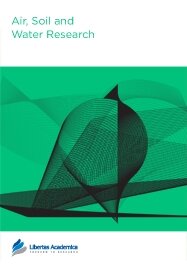

Publication Date: 17 Jun 2008
Journal: Air, Soil and Water Research
Citation: Air, Soil and Water Research 2008:1 13-19

Departamento de Microbiología III, Universidad Complutense, 28040 Madrid, Spain.
Abstract
The biological community in activated sludge wastewater plants is organized within this ecosystem as bioaggregates or flocs, in which the biotic component is embedded in a complex matrix comprised of extracellular polymeric substances mainly of microbial origin. The aim of this work is to study the role of different floc-associated ciliates commonly reported in wastewater treatment plants-crawling Euplotes and sessile Vorticella- in the formation of aggregates. Flocs, in experiments with ciliates and latex beads, showed more compactation and cohesion among particles than those in the absence of ciliates. Ciliates have been shown to contribute to floc formation through different mechanisms such as the active secretion of polymeric substances (extrusomes), their biological activities (movement and feeding strategies), or the cysts formation capacity of some species. Staining with lectins coupled to fluorescein showed that carbohydrate of the matrix contained glucose, manose, N-acetyl-glucosamine and galactose. Protein fraction revealed over the latex beads surfaces could probably be of bacterial origin, but nucleic acids represented an important fraction of the extracellular polymeric substances of ciliate origin.
PDF (1.20 MB PDF FORMAT)
RIS citation (ENDNOTE, REFERENCE MANAGER, PROCITE, REFWORKS)
BibTex citation (BIBDESK, LATEX)

The submission and publishing process was a good experience. During the last few weeks from the submission to publication I have worked with high quality staff. In my opinion, the easy communication was the most important characteristic of Libertas and an important influence on the final quality of the article. I definitely recommend the publisher to my co-workers.

All authors are surveyed after their articles are published. Authors are asked to rate their experience in a variety of areas, and their responses help us to monitor our performance. Presented here are their responses in some key areas. No 'poor' or 'very poor' responses were received; these are represented in the 'other' category.See Our Results
Copyright © 2013 Libertas Academica Ltd (except open access articles and accompanying metadata and supplementary files.)
Facebook Google+ Twitter
Pinterest Tumblr YouTube